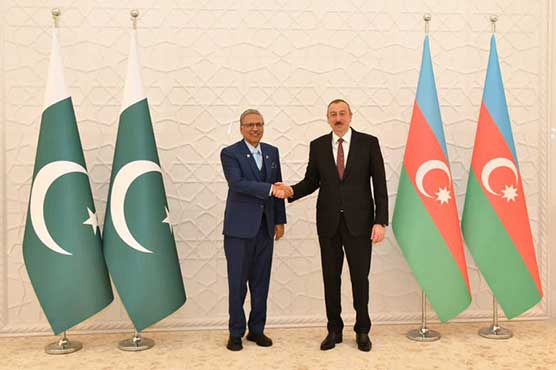
Similarities between Kashmir and Nagorno-Karabakh: Two Countries, Same Issues.
Surprisingly there are more similarities between Kashmir and Nagorno-Karabakh than distinctions. These two conflicts brought Pakistan-Azerbaijan closer to each other and Armenia-Pakistan to an estrangement. Similarly, Armenia supports India to counter Pakistan as the common saying is; the enemy of your enemy is your friend.
Pakistan and Azerbaijan relations are beyond merely a support to each other over the conflict regions. They are brothers from different mothers.
Upon the fall of the Soviet Union in the 1990s, the Armenian army and ethnic Armenian terror groups wildly and barbarically attacked and invaded the internationally recognized Azerbaijani land in 1992. It is also known as the 1992 war between Azerbaijan and the aggressor Armenia. The Armenian invasion of Azeri Land resulted in the occupation of Nagorno-Karabakh and the other seven surrounding Azerbaijani districts.
The Armenian army massacred hundreds of Azeri Muslims and more the 700,000 become Internally Displaced Persons (IDPs). On February 26, 1992, the Armenian army and ethnic Armenian terror groups committed genocide of Azeri Muslims in Khojaly, also known as the Khojaly genocide.
More than 613 Azeri Muslims lost their lives including 106 women and 63 civilians. The United Nations resolutions (822, 853, 874 and 884) called for the withdrawal of Armenian forces from the occupied land and fully recognized Azerbaijani sovereignty over the conflict region.
Pakistan fully supports Azerbaijan’s stance over the said issue and Pakistan’s senate recognized the Khojaly massacre as genocide. Furthermore, Pakistan does not recognize Armenia as a sovereign state nor has diplomatic relations with her.
According to the then Pakistani Ambassador in Baku Abdul Hamid “When Armenia approached us asking ‘what problems do we have between us and why have you not recognized us as a country?’ we specifically said that we have just one problem, and that’s the Nagorno-Karabakh problem. Resolve it, and we will recognize you.’” In turn, Azerbaijan supports Pakistan’s stance over the Kashmir conflict with India.
After the withdrawal of imperial Britain from south Asia, India occupied the Jammu & Kashmir region by force. Nearly a million Indian soldiers are deployed in the Jammu & Kashmir region. Since then, the international human rights bodies reported massive human rights violations by the Indian army in the valley.
These human rights atrocities include mass rapes, torture, detentions, extrajudicial kills, et cetera. The United Nations resolutions called for a plebiscite in Kashmir to peacefully resolve the issue but unfortunately, it did not materialize to date. In 2019, India abrogated article 370 of the Indian constitution to nullify the autonomous status of J&K and merge it with the Indian state. Moreover, Armenia supports India’s stance over Kashmir. Both aggressors support each other over the conflict regions.
The following are some similarities between Kashmir and Nagorno-Karabakh regions.
- Both regions, Kashmir and Nagorno-Karabakh, are occupied by the Armenia and Indian forces by force.
- Both issues, Kashmir and Nagorno-Karabakh, have United Nations resolutions calling for peaceful resolutions of the conflicts.
- Muslims are being massacred in both regions by the Indian and Armenian forces.
- Both the disputes, Kashmir and Nagorno-Karabakh, resulted in several Indo-Pak and Azerbaijani-Armenian wars.
- Both disputes, Kashmir and Nagorno-Karabakh, are the flashpoints of both regions, south Asia and the Caucasus.
- In both cases, the world and the United Nations failed to peacefully resolve the issues.
- Pakistan and Azerbaijan support each other’s stance over Kashmir and Nagorno-Karabakh’s conflicts.
- Armenia and India support each other’s stance over Kashmir and Nagorno-Karabakh’s conflicts.
- Both Kashmir and Nagorno-Karabakh’s conflicts compelled Pakistan and Azerbaijan to massively armed and prepare themselves for any possible invasion from their neighbors.
- Both Kashmir and Nagorno-Karabakh’s conflicts are called “frozen conflicts” but the 2016 skirmishes between Armenia and Azerbaijan and the 2019 mini-war between India and Pakistan negates the often carelessly used term the “frozen conflicts”.
- In both conflict areas, the borders are known as LoC (Line of Control in Kashmir, and Line of Contact in Nagorno-Karabakh).
- Both Kashmir and Nagorno-Karabakh are the legacies of two expansionists’ empires, the imperial British Empire and the communist Soviet Empire.
- In both conflicts, millions of people have been forced out of their homes by the Indian and Armenian forces and become refugees.
- In both regions, Kashmir and Nagorno-Karabakh, Indian and Armenia forces often violate the ceasefire over LoC.
- Pakistan and Azerbaijan support each other in the UN over the Kashmir and Nagorno-Karabakh.
- India and Armenia support each other in the UN over the Kashmir and Nagorno-Karabakh.
- Both conflicts can flare-up both the regions and can result in full-scale war any minute.
